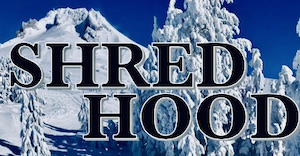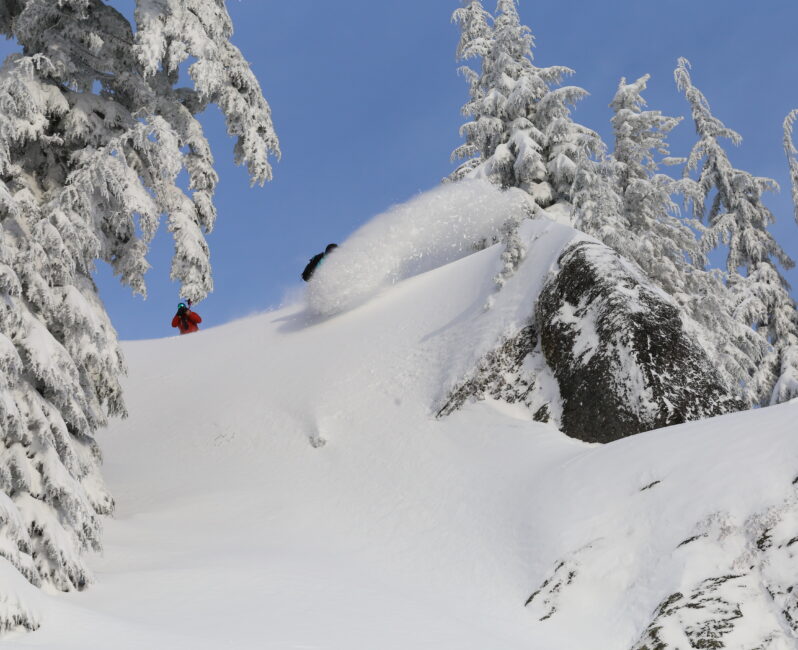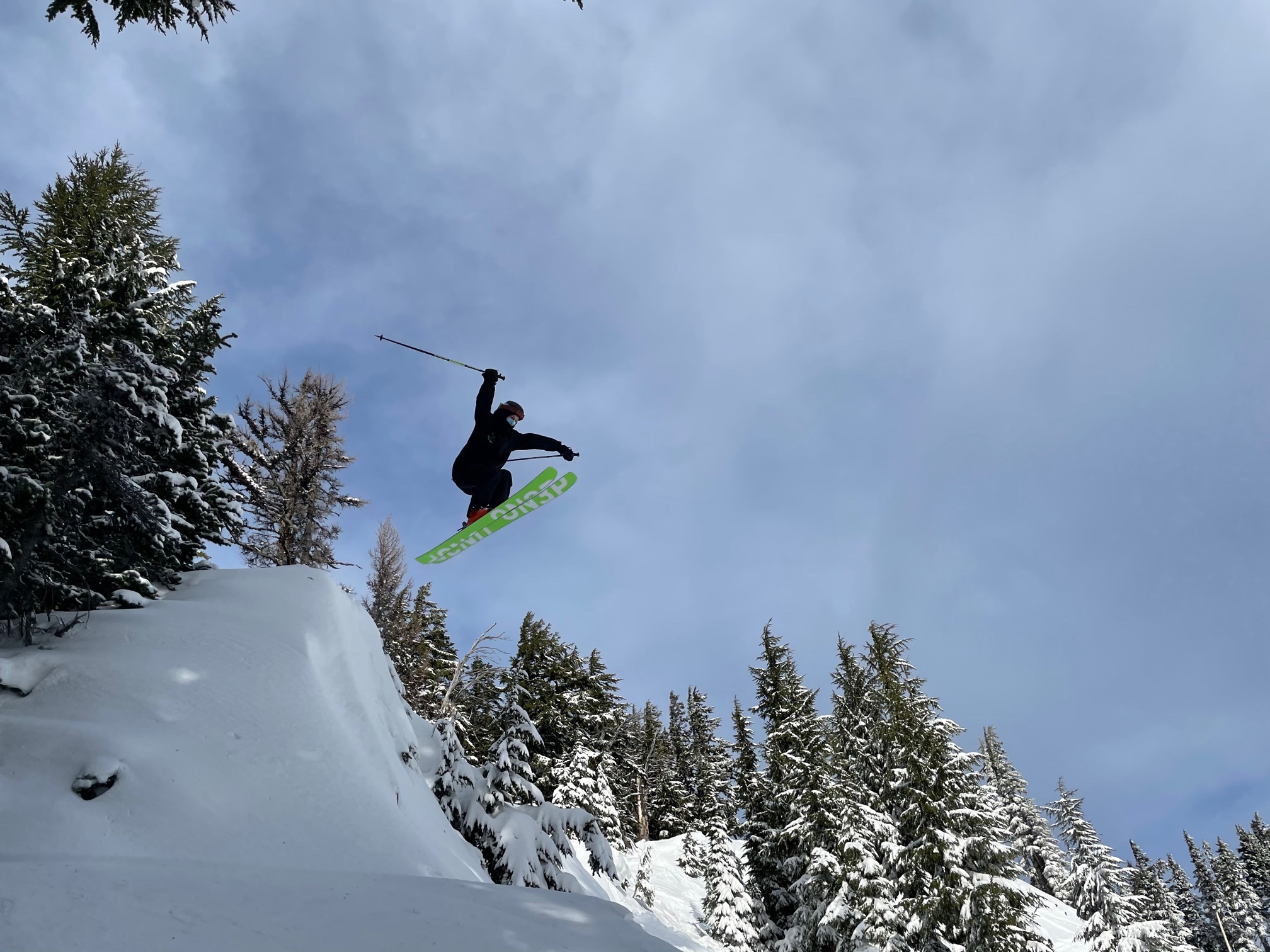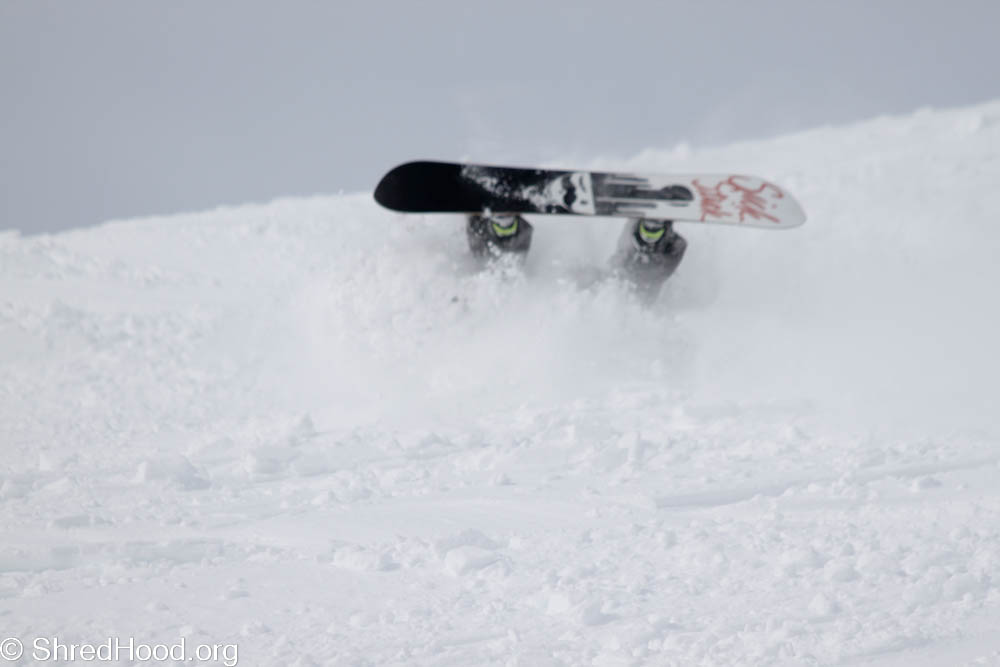The deeper the snow, the greater the risk. Photo by Grant Myrdal
Story by Ben McKinley
Ever find yourself basking in the soul pow glory of skiing untracked snow only to realize you don’t know exactly where to go next so you jump in the nearest tracks you can find? Or maybe the terrain just flattened out and you want to maintain speed? I’ve found myself in that position too many times to count.
That strategy can go terribly wrong if you are not careful.
My friend, E.G. (AKA Bigbird, AKA Mayor of Powtown), was skiing out of Heather Canyon in the late ‘90’s and ended up following someone else’s tracks only to fall 20 feet into a creek cave below the surface. Fortunately, he was not hurt, but the woman who made those ski tracks was soaking wet in the underground creek bed with two broken legs. Before he could coordinate a rescue with his buddy above on the surface, another snowboarder found his way into the wrong kind of white room. All three riders were extracted by ski patrol, and survived. I imagine all three approach the lower drainage of Heather Canyon very differently as a result.
Big slides, lost lives
Snow safety equipment has come a long way. Yet, just about every year, we hear tragic stories of skiers getting wrecked or losing their lives inbounds at local ski resorts. Why is this? Well, as much as we want to believe that ski patrol can address all avalanche risk and we can avoid tree wells and myriad other hazards in the resort, these risks are the very thing that makes the sport so incredibly fun.
Remember the massive, artillery-triggered avalanches of April 10, 2019 that closed Heather Canyon for a week? I had the opportunity to ski through the piles of ice, snow and ravaged trees in the aftermath. It was amazing how large and far that slide went, originating from Super Bowl and A-Zone and traveling all the way to the meadow adjacent to Heather Chair base. A similar avalanche broke loose naturally, in the middle of the night, several winters prior. Rather terrifying.
How about the grim week in February 2020 when two skiers died in the same week in Heather Canyon? What about that time a local The Dalles resident tragically lost his life skiing solo in Jack’s Woods in March 2017? It took rescuers a week to locate his body.
These are all scary stories that give us pause as we think about one of our favorite playgrounds having the potential of doing terrible harm to us and the ones we love. So should we just stay home and give up the sport that provides so much to many of us? That isn’t a reasonable solution to me. Keep in mind that I coach the MRT Big Mountain and Backcountry Ski Team. I have a significant responsibility to travel safely through these magical places with adolescents, one of which is my own daughter. So we take safety VERY seriously. I’d like to share some of those practices below.
Six Ways to Reduce Risk
- Pay attention to Ski Patrol. Follow along with Ski Patrol and resort communications on social media and ask the nearest patroller for updates.
- Ducking lines is a nonstarter. If there is a rope up, it’s there for a good reason.
- Always ski with a buddy. Be accountable for each other and break down the terrain as you descend. Don’t just meet each other at the bottom. Work the terrain as a team. Communicate what looks good and what looks sketchy.
- Understand the real risks of tree wells, especially after heavy storm cycles that drop the very soft snow we seek to play in. The best snow on the mountains is often in the trees, but the heat that these living plants generate can cause deep, hazardous traps for skiers and snowboarders who cut it too close.
- Be very wary of creeks buried in snow, especially in lower Heather Canyon. The snow in these areas can collapse quickly and drop you down into a cold and wet situation that may prove impossible to climb out of. Depressions in the snow are a good indicator that the surface may be a thin snow-bridge.
- Wear a helmet. Always.
Beacon, Shovel, Probe
Beyond the basics, also consider purchasing, and more importantly, learning how to use avalanche safety gear including a beacon, shovel and probe. This might seem like overkill to some, but when lives are at stake and every second counts, having a beacon to support fast recovery of buried and missing bodies is a no-brainer. That piece alone can aid rescuers in locating riders gone missing. Once the body is located, proper use of a probe and shovel help to ensure a quick extraction and increased chance of survival. Several areas on Heather Canyon and Private Reserve require these tools for access.
Some quick and dirty details on how these devices work in concert, for those not familiar:
- A beacon is a specialized electronic device with two settings. It transmits signals and it searches for signals. That is all it does. Everyone in the group starts off in transmit mode. If somebody gets caught in a slide, the members of the team that did not go for a ride switch their beacons to search mode and begin searching for their friends.
- Unfortunately, there is no cell phone technology capable of reliably helping you locate a friend buried in the backcountry. Although mobile phones are always a good idea to have whenever you are in the backcountry, they serve very different purposes.
- There is a pretty logical protocol for narrowing your search using the beacon. You start off making large zigzags toward the expected location of the person. As you get closer, you end up on your knees finding the strongest signal possible before breaking out the probe.
- The probe is a long aluminum or carbon pole that resembles a tent pole. Probes are 200-300+ cm long when extended. You use these to quickly stab deep into the snow to make a physical connection with the buried person.
- You begin using the shovel to dig out your fellow rider only once you’ve made a positive probe strike. Again there are established methods used to efficiently access the victim depending on the location of the burial and available diggers in your crew.
I advocate carrying a beacon, probe, and shovel with you on deep days in bigger and more complex terrain in case you need to act fast to help a friend that finds themselves in a bad spot. I’ve been caught in deep moving snow at the resort several times. Fortunately, I never faced any danger. I felt very powerless and vulnerable in those cases, though.
Anyone can learn the rescue basics
With practice, you become very proficient at locating and getting access to a buried beacon. My kids have a great time racing each other and practicing with these devices. Hopefully, they will never need to use them. Here’s my daughter Lauren, age 8, demonstrating how to use the tools on a sunny day near Timberline Lodge.
Search and locate the buried person with the beacon.
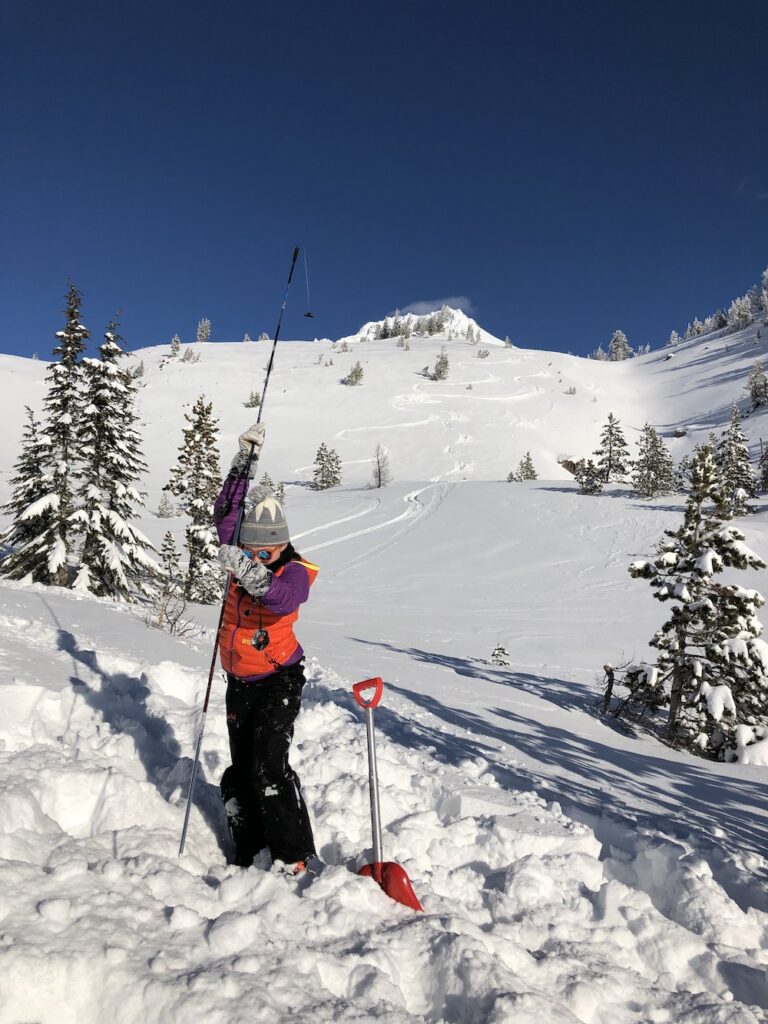
Use the probe to confirm the location of the person in the snow.
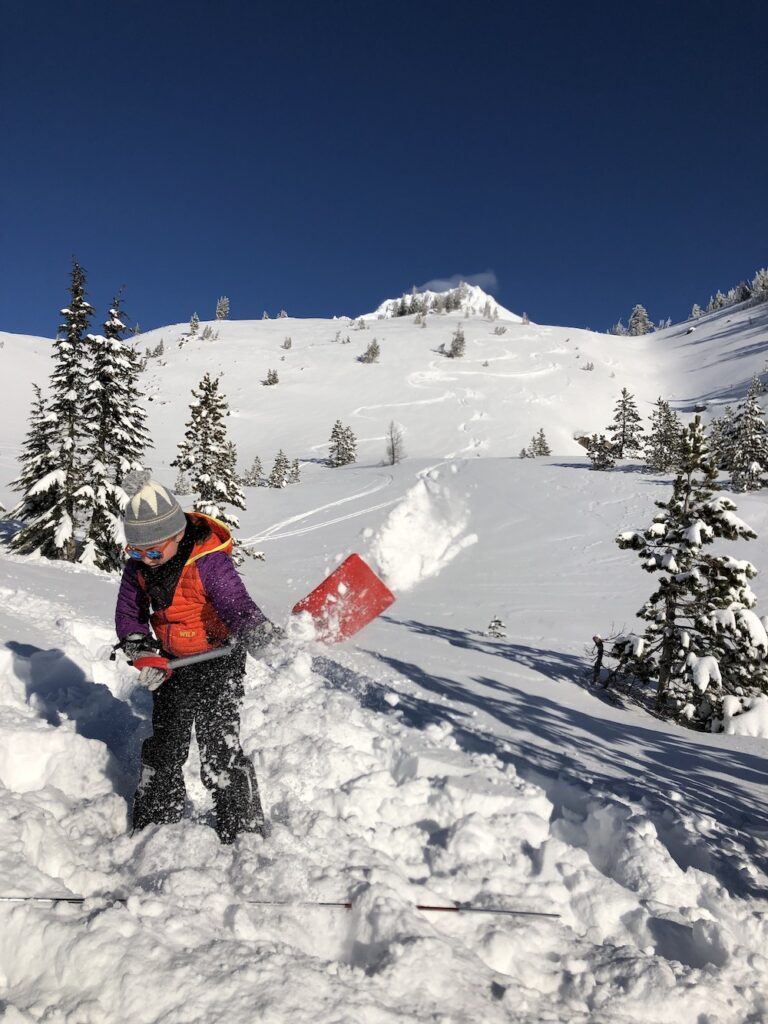
Dig out the buried person with the shovel and clear their airway.
There are many manufacturers out there creating reliable tools. I’d suggest the BCA Tracker S Package ($385 retail) as a great intro kit that keeps costs down and simplifies the user experience. We use these with our ski program and they’ve proven quite effective during practice sessions with the staff and athletes. I recommend swapping out beacons every 3 years to ensure proper antenna function and current technology.
When it comes to backpacks to carry your safety gear, there are many options. Ideally, the pack has a separate, easily accessible pocket for the shovel and probe so you can deploy it rapidly when you need it. 12-20 Liters is a good volume for resort use. These lower volume packs allow you to ride lifts without taking the pack off. Follow guidelines with regard to chest, waist and groin straps. The pack will do no good if it gets ripped off in a slide. You can also explore airbag packs to increase trauma protection and float on the slide debris.
Once you have the equipment, get educated! Almost all manufacturers have released useful training videos online. I review these at the beginning of each season. BCA and G3 are two of my go-to resources. Also consider taking an avalanche rescue course or Level 1 Avy Certification from local operations like Mountain Savvy, OR Ski Guides, or The Mazamas.
I hope you’ve found this helpful as you look to expand your knowledge and access to some of the most incredible terrain Mt. Hood has to offer. With some common sense, trusted protocols and the right equipment, you can safely enjoy these magical places season after season. Hope to see you in the steep and deep soon.
Ben McKinley is an entrepreneur, avid backcountry skier, and head coach of Big Mountain and Backcountry for the Meadows Race Team on Mount Hood.
Last modified: January 26, 2021
